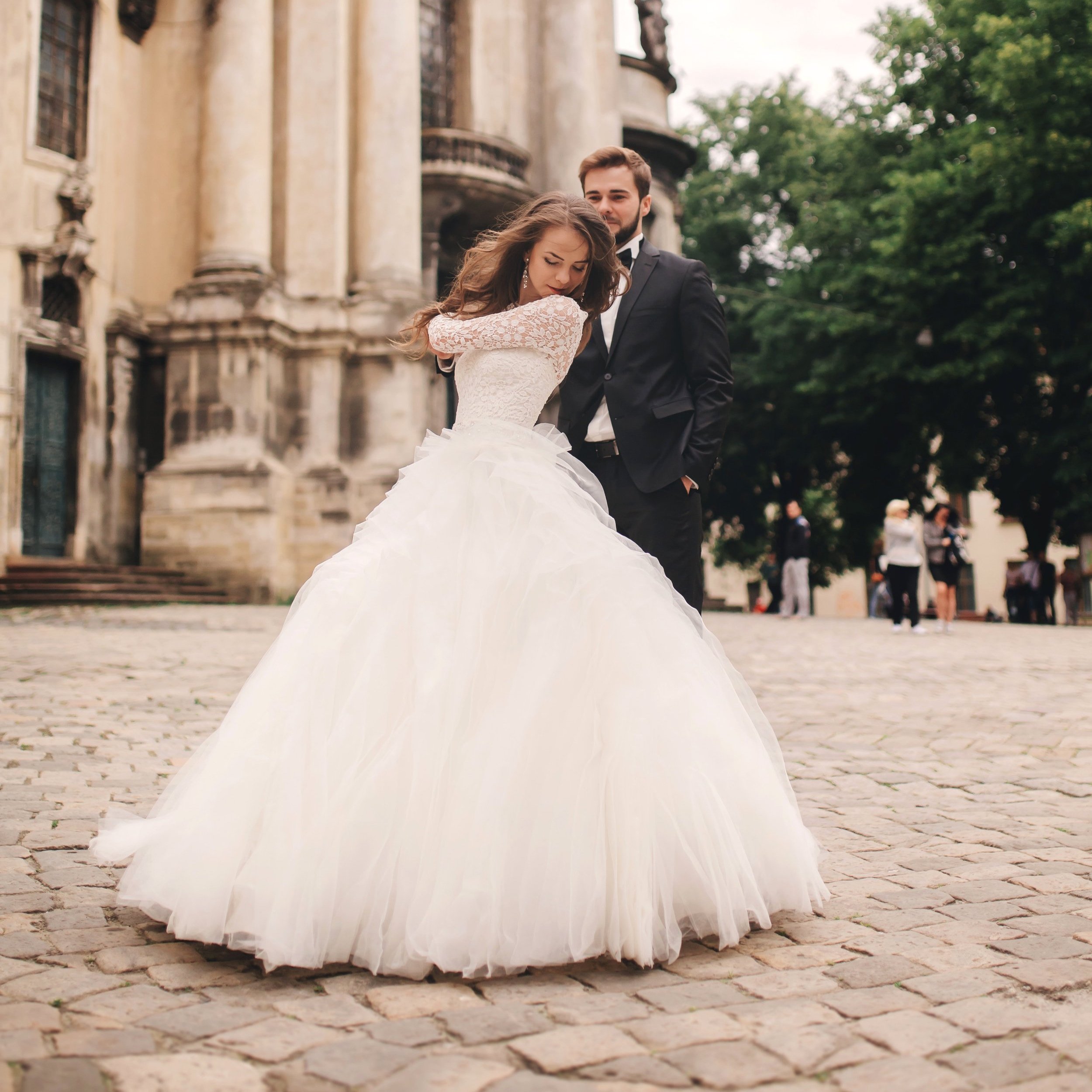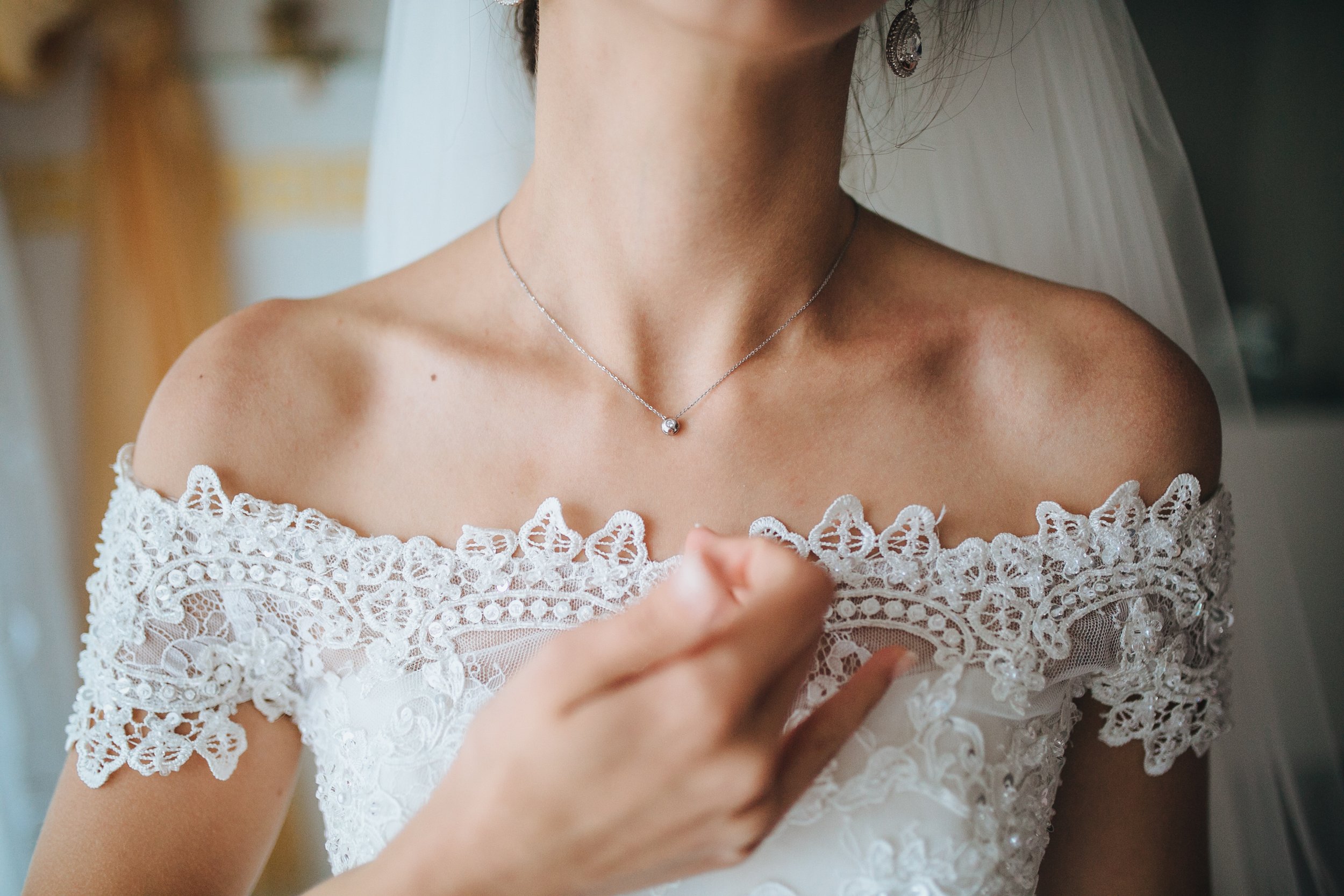Dress vs. Dance
One of the most important pieces to any wedding: the wedding dress! Brides will spend a lot of time, energy, and money on finding the perfect dress that checks all the boxes. And yet, as beautiful as the dresses are, they are usually more compatible with standing for pictures, than they are for dancing and dipping. Let’s just say, there is a reason Baby’s dress in the finale of “Dirty Dancing” was short with a wide skirt and straps!
While in no way do we think your first dance should alter the decision of your wedding dress, it’s definitely good to know how different factors on the dresses (such as, fabric, length, trims, and so on) can affect actions during your dance. For those of you that choose to get a different dress for the reception/dance, or for those that choose to stay in the same ceremony dress - we have devised this list of major elements to think about related to different dress styles.
*Disclaimer: this is not a list of things that can go wrong! Simply a collection of things to watch out for. Click on the + next to each title to learn about our suggestions on how to overcome those dress inconveniences.
Strapless
-
Fear of the dress sliding down can prevent a tall and confident posture.
See if removable straps can be attached before the dance- either clear straps, rhinestoned straps, or fabric straps in the same color as the dress. Practice moving with an elongated spine, shoulders back, and chest up. This lift will potentially keep it from slipping while dancing.
-
Be careful of bending over backwards during a dip.
Instead, have your partner change the position of their hands to a wider placement to better support the entire back, and therefore, the dress.
Mermaid Cut
-
The fitted nature of the of skirt can cause a feeling of restriction in the legs.
Don’t fight against it. Take smaller steps, always keeping them shoulder width and underneath your body.
-
The feeling of not being able to move the legs can cause the upper body to tense up.
The dress hugs the curves of the body - use that to your advantage! Show off some of the hip action and make sure the joints are relaxed. Add more arm styling to accentuate the curves and cover any kind of tenseness.
Ballgown
-
Most obvious fear: stepping on the dress while moving.
Not to say this won’t happen, but keep the dance turning if possible. Bustling will help, if possible. But the more the dress is flaring out, the less likely you are to step on it. Also, try a “Princess Hold”: right hand with your partner, the left hand holding the dress out to the side.
Another tip: try to not lift the feet so far off the ground. Keep them closer to the floor as you step.
-
Extra volume = extra space between the couple.
Make sure to practice dancing with extra space between you and your partner (especially for underarm turns) to better emulate the dress on the day of. Try keeping a pillow between you both!
Sleeves
-
Lifting the arms may be a challenge.
Depending on the style of the sleeves, or the type of fabric, there may be some arm restriction experienced. Try keeping the dance frame smaller, and use more of a hugging hold.
Underarms turns may also prove to be difficult. Alternative turns with different hand placements and different arm stylings can be learned to better accommodate any restrictions.
Long Trains
-
More fabric behind you will make backward steps more challenging.
Avoid doing a lot of back steps in a row. Try more side steps and actions, and give more time for turns. Give plenty of time for wide turns, which allow the fabric to flare out and get back to its place, before continuing the next step. Bustle the skirt, if possible.
Challenge yourself with a lift! Imagine all that fabric billowing behind you in a grand swoop off the floor!
At the end of the day, make sure you stick with what makes you happy and feel like a million bucks. Remember, dances can be revised to better suit any kind of challenge. But it’s always best to let your instructor know as much ahead of time as possible on the dress details that way they can better choreograph a dance under the circumstances. And the more you can practice with elements closest to your dress, the more confident you will feel the day of! And confidence is the greatest accessory to any dress you wear, or dance you perform.




